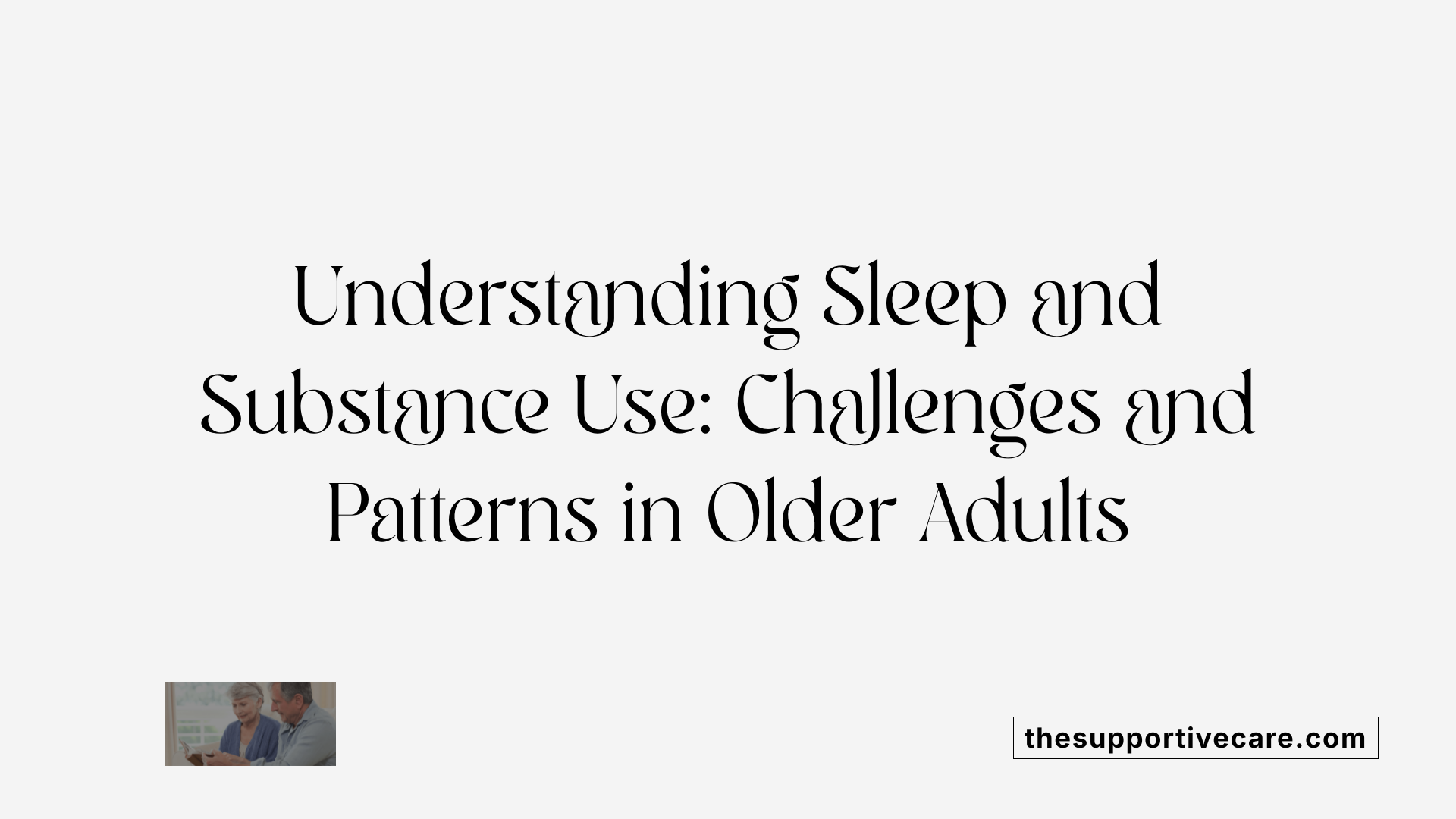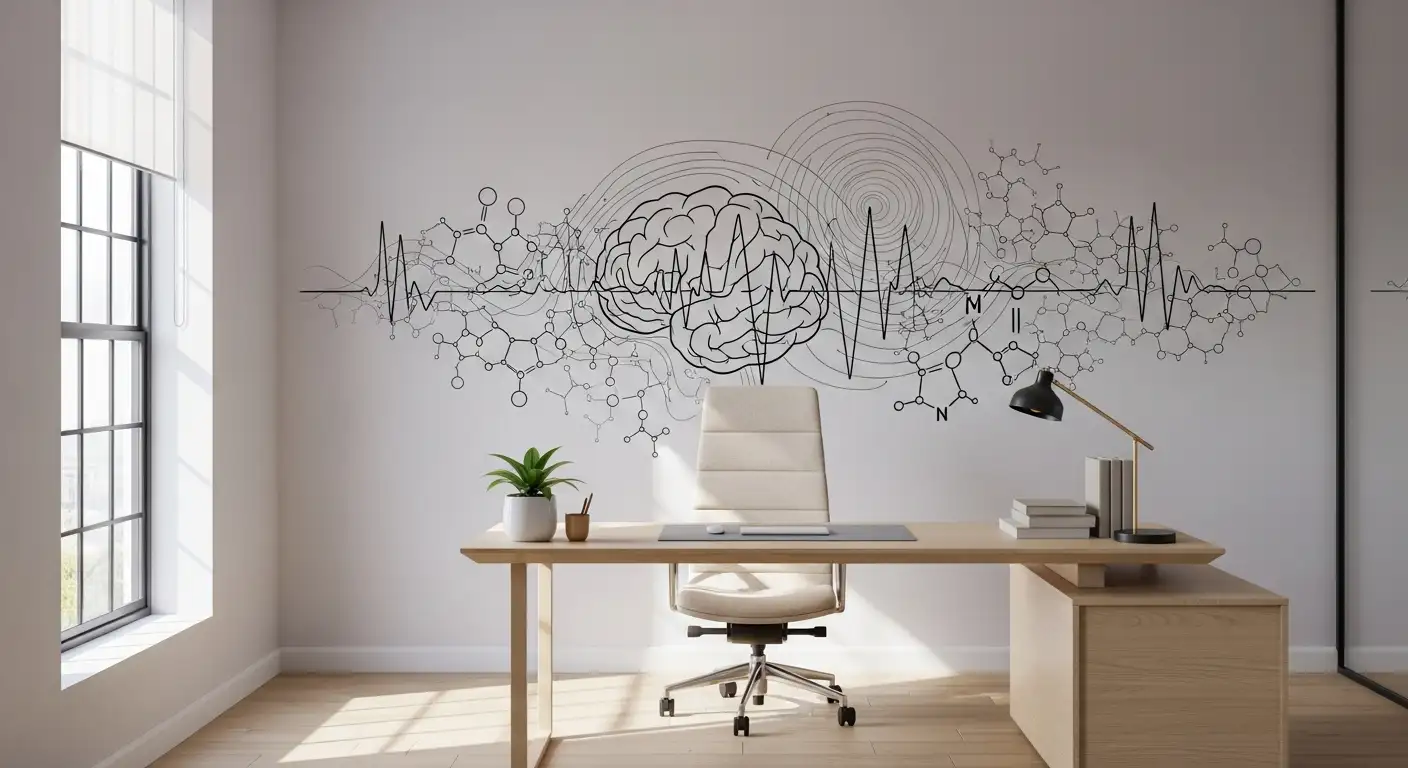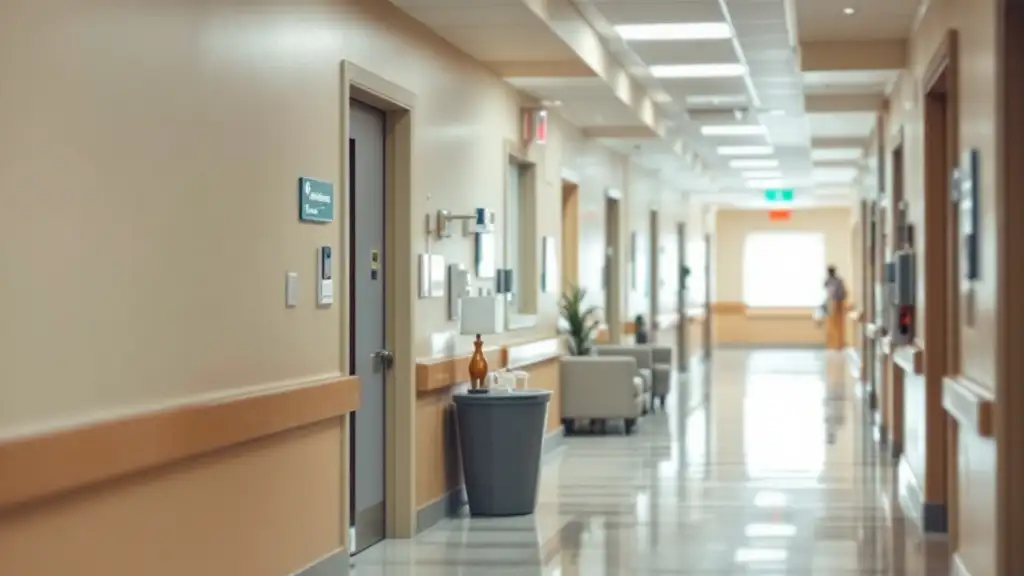Introduction to the Interplay of Sleep, Mental Health, and Substance Use in Seniors
Sleep disturbances, mental health disorders, and substance use disorders form a complex and interconnected web of challenges faced by many older adults. These conditions often exacerbate one another, leading to significant difficulties in diagnosis, treatment, and recovery. Understanding how sleep disorders relate to mental health issues and substance abuse in seniors is vital for improving comprehensive care and tailoring effective interventions.
Prevalence and Types of Sleep Disorders Among Older Adults
Common Sleep Problems in Seniors
Older adults frequently experience a range of sleep problems that significantly affect their quality of life. These issues often include difficulty falling asleep, frequent awakenings during the night, early morning awakenings, and non-restorative sleep. Aging is naturally associated with changes in sleep architecture, resulting in decreased total sleep time and more fragmented sleep patterns.
Types of Sleep Disturbances in Older Adults
Sleep disturbances in seniors commonly include insomnia, characterized by trouble initiating or maintaining sleep, and hypersomnia, which involves excessive daytime sleepiness or prolonged sleep episodes. Sleep apnea is also prevalent, particularly obstructive sleep apnea, leading to disrupted breathing and fragmented sleep. Additionally, disruptions in rapid eye movement (REM) sleep are observed, which compromise the restorative quality of sleep essential for mental and physical health.
Age-Related Changes in Sleep Patterns
Physiological changes in the aging body contribute to altered sleep. There is a natural reduction in slow-wave and REM sleep, which are crucial for cognitive function and emotional regulation. Older adults tend to experience increased sleep latency (time to fall asleep) and decreased sleep efficiency, meaning more time spent in bed awake rather than asleep. These changes, combined with chronic health conditions and medication use, often exacerbate sleep disturbances in this population.
The Intersection of Sleep Disturbances and Mental Health Disorders in Seniors

How Are Sleep Disturbances Symptoms of Mental Health Disorders?
Sleep disturbances, such as insomnia and hypersomnia, are frequently experienced symptoms among individuals with mental health disorders (MHD), including seniors. In older adults, these sleep problems often coexist with psychiatric conditions and can serve as early signs or exacerbating factors for mental health challenges. Common mechanisms include disruptions in sleep architecture caused by disorders like depression and anxiety, which are prevalent in this population.
What Are the Common Psychiatric Conditions in Seniors With Co-occurring Sleep Issues?
Depression and anxiety stand out as the most common psychiatric conditions linked with sleep disturbances in older adults. Approximately 40% of seniors with substance use disorders also experience mental illness, often including mood and anxiety disorders. These conditions can worsen sleep quality by causing difficulties in falling asleep or maintaining sleep. Conversely, persistent sleep problems may contribute to the onset or severity of these disorders, creating a complex interplay known as a dual diagnosis.
How Does Poor Sleep Affect Mood and Cognitive Function in Older Adults?
Poor sleep quality significantly impacts mood regulation, leading to increased irritability, depression, and anxiety symptoms in seniors. It also impairs cognitive functions such as memory, attention, and executive functioning. Sleep disturbances can accelerate cognitive decline and diminish overall mental health, affecting daily functioning and quality of life. The combined burden of mental health disorders and sleep problems elevates risks for substance misuse and complicates treatment and recovery efforts.
| Aspect | Description | Specific Implications for Seniors |
|---|---|---|
| Sleep Disturbances | Include insomnia, hypersomnia, fragmented sleep | Common in MHD; serve as symptoms and risk factors for SUD |
| Psychiatric Conditions | Depression, anxiety prevalent among seniors | Increase difficulties in sleep initiation and maintenance |
| Impact on Cognition | Reduced memory, attention, executive function | May accelerate cognitive decline and worsen overall mental health |
| Mood Effects | Increased irritability, depression, anxiety | Lead to poorer emotional regulation and quality of life |
This intersection underlines the necessity for integrated healthcare approaches that screen for and address sleep disturbances alongside mental health conditions in older adults. Early identification and management are essential to improve outcomes and reduce risks, including the development or worsening of substance use disorders.
The Role of Sleep Disturbances as Predictors for Substance Use Disorders

How Do Sleep Disturbances Alone Predict Risk of SUD Treatment?
Sleep disturbances (SD), such as insomnia and hypersomnia, are more than just symptoms—they can serve as early warning signs for substance use disorders (SUD). Research shows that individuals experiencing SD have a significantly higher chance of requiring treatment for alcohol and illicit drug use. Approximately one-fifth of patients with sleep disturbances later receive treatment for illicit drug disorders, and about 12% for alcohol use disorders. This predictive relationship emphasizes the importance of recognizing sleep problems as potential harbingers of substance abuse.
What Happens When Sleep Disturbances Co-Occur with Mental Health Disorders?
The risk for developing SUD dramatically increases when sleep disturbances and mental health disorders (MHD) occur together. Patients with both SD and MHD exhibit more than double the likelihood of eventually needing substance use treatment compared to those without these issues. Around 40% of individuals with substance use disorders also have co-occurring mental illnesses, which complicates the clinical picture and elevates risk further. This co-occurrence underscores the necessity for integrated approaches addressing sleep, mental health, and substance use simultaneously.
Why Is Screening for Sleep Disturbances Important in Identifying Higher Risk Patients?
Routine screening for sleep disturbances in primary care settings serves as an effective tool to identify individuals at higher risk for substance use disorders, facilitating early intervention before addiction develops or worsens. Sleep problems are often under-assessed during medical visits, yet their presence can signal underlying mental health and substance use vulnerabilities. Incorporating sleep quality assessments into health evaluations enhances detection of potential SUD risk and supports comprehensive, preventive care strategies. Early recognition allows healthcare providers to intervene with behavioral therapies and supports that may reduce progression to full-blown substance dependence.
Common Substance Use Patterns and Sleep Disorders in Older Adults

Which substances are typically misused by older adults?
Alcohol remains the most commonly misused substance among seniors, with alcohol use disorder prevalence around 1.2% for abuse and 0.24% for dependence in those aged 65 and older. Cannabis use has risen significantly in this age group, often used to manage chronic pain, arthritis, sleep difficulties, anxiety, and depression. Opioid use is less prevalent but remains a concern, especially for those prescribed pain relief after procedures or with a history of opioid use disorder.
How do these substances impact sleep cycles and quality?
Alcohol can initially reduce sleep onset latency but ultimately fragments sleep, disrupts the sleep architecture, and suppresses REM sleep, especially problematic in older adults due to slower metabolism. Cannabis may reduce sleep onset latency and increase slow-wave sleep at low doses but can disrupt sleep upon discontinuation. Opioids suppress REM and slow-wave sleep, increase sleep latency, and are commonly linked with sleep-disordered breathing. Nicotine, though less prominent, increases sleep latency and causes insomnia, with withdrawal further disturbing sleep. Benzodiazepines alter sleep stages by increasing Stage 2 NREM and reducing REM sleep, which may affect memory and cognitive function.
What physiological changes increase vulnerability to substance effects in seniors?
Age-related physiological changes like reduced liver function and muscle mass impair metabolism and clearance of alcohol and drugs, increasing their effects. Brain receptor sensitivity increases, making older adults more susceptible to cognitive and physical impairments even at moderate doses. These changes elevate the risk of harmful interactions between substances, prescribed medications, and over-the-counter drugs. Combined with typical comorbidities and polypharmacy, seniors face a higher risk of adverse outcomes including falls, cognitive decline, and prolonged recovery.
| Substance | Impact on Sleep | Age-related Vulnerability |
|---|---|---|
| Alcohol | Disrupts REM, fragments sleep | Slower metabolism increases impairment |
| Cannabis | Sedation at low dose, withdrawal disrupts sleep | Higher THC levels risk overdose in seniors |
| Opioids | Suppresses REM, increases sleep apnea risk | Increased sensitivity and breath issues |
| Nicotine | Increases sleep latency, insomnia | Withdrawal worsens sleep quality |
| Benzodiazepines | Alters sleep stages, reduces REM | Risks of dependence and cognitive effects |
Understanding these patterns helps tailor interventions that address both substance use and sleep disturbances in the older adult population.
How Substance Use Aggravates Sleep Disturbances and Mental Health Issues
How do alcohol, opioids, and benzodiazepines disrupt sleep architecture?
Alcohol initially shortens the time it takes to fall asleep but ultimately fragments sleep and disrupts essential stages like REM sleep, which is crucial for mental and physical recovery. This disruption is especially pronounced in older adults due to slower metabolism. Opioids suppress REM and slow-wave sleep while increasing sleep latency. They are also linked with sleep-disordered breathing, common in patients on opioid therapy. Benzodiazepines increase lighter Stage 2 NREM sleep and reduce REM sleep, potentially impairing memory and cognition. Their prolonged use carries risks of dependence.
Why do individuals self-medicate sleep problems with substances, and what are the consequences?
Many people experiencing sleep disturbances turn to substances such as alcohol, marijuana, opioids, and benzodiazepines to alleviate insomnia or hypersomnia symptoms. While these substances may offer short-term relief, they alter sleep regulatory systems adversely over time, leading to tolerance, increased dependence, and worsening sleep quality. Self-medication creates a feedback loop where sleep problems and substance use exacerbate each other.
How does poor sleep increase relapse risk and craving intensity?
Sleep deprivation heightens stress, irritability, and cravings, all of which are significant relapse triggers. Disrupted or insufficient sleep can impair emotional regulation and cognitive functions, making recovery more difficult to maintain. Because sleep disturbances can persist long after cessation of substance use, they pose a sustained risk to sobriety. Addressing sleep problems effectively is thus critical to reducing relapse risk in recovery programs.
These mechanisms highlight the complex interplay between substance use and sleep disturbances, emphasizing why integrated treatment approaches that address both issues improve long-term outcomes, especially in vulnerable populations such as older adults.
Challenges in Screening and Diagnosis of Sleep, Mental Health, and Substance Use Disorders in Seniors

Underreporting and Stigma
Many older adults underreport substance use and mental health symptoms due to stigma and fear of judgment. This reluctance hampers accurate diagnosis and delays intervention. Social factors such as shame or generational attitudes toward addiction and psychiatric disorders contribute to this barrier.
Symptom Overlap with Aging and Medical Conditions
Distinguishing substance use and mental health disorders from normal aging or chronic medical illnesses is challenging. Symptoms like sleep disturbances, cognitive decline, or mood changes often mimic those caused by physiological aging, complicating the clinical picture. This overlap can lead to underrecognition or misdiagnosis.
Use of Screening Tools
Tailored screening instruments adapted for seniors can improve detection. Tools including:
- CAGE-AID (assesses alcohol and drug use)
- MAST-G (designed for geriatric populations)
- AUDIT (alcohol use assessment)
- CARET (evaluates alcohol-related risks in elders)
These structured tools help systematically evaluate substance use and related risks, addressing underdetection in primary care or geriatric settings.
Importance of Integrated Assessment
An integrated approach combining thorough substance use history, mental health evaluation, and sleep assessment is vital. Coordination among healthcare providers enriches understanding of the complex interplay of conditions common in seniors, facilitating early identification and personalized treatment planning. Continuous monitoring and multidisciplinary care teams are recommended to optimize outcomes in this vulnerable population.
Comprehensive Treatment Services: Multidisciplinary Approach to Addiction and Mental Health

What are the key components of comprehensive treatment services for substance abuse and mental health issues?
Comprehensive treatment services take a holistic, multidisciplinary approach to effectively tackle substance abuse and mental health challenges. The services begin with a thorough assessment to identify the specific mental health disorders (MHD), substance use disorders (SUD), and any co-occurring conditions an individual may have. This evaluation guides the development of tailored treatment plans to meet each patient’s unique needs.
Detoxification is often a crucial early step. It safely manages withdrawal symptoms from substances such as alcohol, opioids, or stimulants, preparing patients for subsequent therapies. Following detox, evidence-based therapies—including individual counseling, group therapy, and family involvement—facilitate behavioral changes and support recovery.
Medication management plays a vital role, especially when addressing mental health symptoms or reducing substance cravings. Careful selection of medications is essential, particularly avoiding those with abuse potential in patients with SUD histories.
Relapse prevention strategies are integrated throughout the treatment process. These include ongoing case management and peer support networks that provide encouragement and resources to maintain long-term recovery. Programs often incorporate cognitive-behavioral therapy, motivational interviewing, and other psychosocial interventions that address both substance use and mental health challenges.
Integration of care for dual diagnoses—co-occurring mental health and substance use disorders—is prioritized. This means offering coordinated treatment that treats both conditions simultaneously rather than in isolation, which improves outcomes and reduces the risk of relapse.
By combining assessment, detoxification, targeted therapies, medication management, and integrated care, comprehensive treatment services address the multifaceted nature of addiction and mental health. This multidisciplinary approach is critical for achieving sustained recovery and improved quality of life for individuals facing these complex issues.
Integrated Care Models for Treating Co-Occurring Sleep, Mental Health, and Addiction Disorders
How do treatment programs integrate care for both addiction and mental health disorders?
Integrated treatment programs effectively address addiction and mental health disorders by offering coordinated, multidisciplinary care. These programs combine evidence-based therapies such as cognitive-behavioral therapy (CBT), dialectical behavioral therapy (DBT), and motivational enhancement techniques to simultaneously manage substance use and mental health symptoms.
What approaches do integrated treatment programs use?
They employ a comprehensive range of services, including detoxification, inpatient care, outpatient treatment, and ongoing support, all tailored to the complex needs of individuals with co-occurring disorders. Multidisciplinary teams typically involve psychiatrists, addiction specialists, therapists, and primary care providers working collaboratively.
How do cognitive-behavioral therapy and motivational enhancement support integrated care?
CBT helps patients identify and change negative thought patterns related to both their substance use and mental health conditions, while motivational enhancement therapy strengthens a patient’s readiness to engage in and sustain treatment. Together, these therapies improve coping skills, reduce relapse risk, and promote adherence to treatment plans.
What are the benefits of continuity and accessibility in integrated care?
Continuity of care allows for smooth transitions between treatment stages and consistent monitoring of patients’ progress. Accessibility is improved through insurance policies like the Mental Health Parity Act, reducing barriers to needed services. These factors contribute to better retention rates, symptom reduction, and improved quality of life, particularly for patients managing anxiety, depression, PTSD, or sleep disturbances alongside addiction.
Research indicates that integrated treatment models lead to superior outcomes over fragmented care, particularly for individuals with overlapping conditions. Such programs also foster a more holistic understanding of patient needs by addressing addiction, mental health, and sleep disturbances within a unified framework.
Addiction Treatment Scope: Addressing Various Substances and Behavioral Addictions
What types of addiction can comprehensive treatment services address?
Comprehensive addiction treatment services cover a broad spectrum of dependencies. They address substance use disorders involving alcohol and illicit drugs, as well as behavioral addictions such as gambling and internet gaming. Treatment programs are designed to meet a range of severity levels and individual needs, utilizing multiple care settings.
What are the different levels of care available in addiction treatment?
Treatment can begin with medically managed detoxification to safely cleanse the body. Following detox, patients may engage in residential treatment for intensive support, partial hospitalization for structured day programs, or outpatient services for ongoing therapy while residing at home.
Why is tailoring therapy essential in addiction recovery?
Tailored, evidence-based therapies like cognitive-behavioral therapy (CBT), dialectical behavior therapy (DBT), and family involvement help address individual triggers and behaviors specific to the person’s addiction. These personalized approaches enhance engagement and improve treatment success.
How important is managing co-occurring disorders in addiction treatment?
Many individuals with substance use disorders also experience mental health issues such as anxiety or depression. Integrated treatment models that address both mental health and addiction simultaneously are critical to achieving lasting recovery. Coordinated care reduces relapse risk and improves overall outcomes.
Table: Addiction Treatment Components Overview
| Aspect | Description | Importance |
|---|---|---|
| Types of Addictions | Alcohol, drugs, gambling, internet gaming | Wide coverage enhances accessibility |
| Levels of Care | Detox, residential, partial hospitalization, outpatient | Flexible options meet diverse patient needs |
| Therapeutic Approaches | CBT, DBT, family therapy | Personalized to individual circumstances |
| Co-occurring Disorders | Mental health conditions treated alongside addiction | Promotes holistic recovery |
In summary, comprehensive addiction treatment is multifaceted, addressing various substances and behaviors across multiple care levels. Individualized, evidence-based therapies, coupled with integrated management of co-occurring disorders, support sustained recovery and improved quality of life.
The Critical Role of Ongoing Support and Aftercare in Maintaining Recovery
What role does ongoing support and aftercare play in recovery from addiction?
Ongoing support and aftercare are vital for sustaining recovery from addiction. After completing initial treatment, individuals face many challenges that can trigger relapse. Continued care offers a structured safety net through various approaches, ensuring that recovery progress is maintained.
Importance of relapse prevention
Relapse prevention strategies are central to aftercare, helping individuals recognize and manage triggers such as stress, sleep disturbances, or cravings that can jeopardize sobriety. Techniques include cognitive-behavioral therapy (CBT), mindfulness practices, and stress-management skills designed to empower individuals to handle setbacks effectively.
Peer support groups and counseling
Peer support groups, such as 12-step programs or recovery communities, provide a sense of belonging, shared experience, and accountability. Professional counseling supplements these groups by offering tailored therapeutic interventions to address co-occurring mental health or sleep disorders that often intertwine with substance use disorders.
Medication-assisted treatment and managing cravings
Medication-assisted treatments (MAT) play a crucial role in managing cravings and withdrawal symptoms, especially in disorders related to opioids or alcohol. Medications like naltrexone and others assist in balancing brain chemistry, reducing dependence, and supporting sustained abstinence without abuse potential.
Building resilience and long-term coping mechanisms
Aftercare focuses on equipping individuals with long-term coping strategies to handle life's pressures. This includes developing healthy sleep hygiene, managing mental health symptoms, and fostering resilience through behavioral therapies and lifestyle adjustments. Such skills improve quality of life and reduce the temptation to self-medicate with substances.
Sustained aftercare and support transform recovery from a short-term goal into a lifelong journey, offering stability and hope. By addressing both psychological and physiological needs, ongoing care maximizes the chances of long-term success and better outcomes for individuals recovering from substance use disorders.
Nonpharmacological and Pharmacological Approaches to Managing Sleep Disorders in Recovery
Cognitive-Behavioral Therapy for Insomnia (CBT-I)
CBT-I is a highly effective, nonpharmacological treatment for sleep disturbances commonly seen in people recovering from substance use disorders. It focuses on changing sleep habits and misconceptions about sleep through behavioral strategies and cognitive restructuring. This approach helps reduce insomnia without the risks associated with medications, making it suitable for individuals vulnerable to relapse.
Sleep Hygiene Education and Mindfulness
Alongside CBT-I, sleep hygiene education is crucial. It involves teaching patients to maintain a regular sleep schedule, limit caffeine and alcohol intake, create a conducive sleep environment, and engage in relaxing routines before bedtime. Techniques such as mindfulness meditation, progressive muscle relaxation, and light therapy further assist in promoting quality sleep and managing anxiety or stress that can disrupt sleep during recovery.
Safe Medication Options Without Abuse Potential
When medication is necessary, options like ramelteon, a melatonin receptor agonist, and low-dose doxepin, a sedating antihistamine, are preferred due to their low abuse potential and safety profiles. These medications effectively help with sleep initiation and maintenance without the dependency risks seen with other hypnotics.
Avoiding Benzodiazepines in Addiction Histories
Medications such as benzodiazepines and nonbenzodiazepine sedative-hypnotics should generally be avoided or used with extreme caution in individuals with a history of substance use disorders. These drugs carry significant abuse and dependence potential, which can undermine recovery efforts and increase relapse risk.
Employing a combination of behavioral therapies and carefully selected pharmacological treatments optimized for safety can improve long-term sleep quality and support sustained recovery from substance use disorders.
Specific Sleep Disorders Associated with Substance Use in Seniors
What sleep disorders are linked with substance use in older adults?
Sleep disorders such as insomnia, sleep apnea, and REM sleep disruptions are common among older adults using substances like alcohol and opioids. Alcohol can initially help with falling asleep but disrupts restorative REM sleep, leading to fragmented and poor-quality sleep. Opioids suppress both REM and slow-wave sleep, increase time to fall asleep, and often contribute to sleep-disordered breathing, a condition that involves abnormal breathing patterns during sleep.
Can sleep problems persist after quitting substance use?
Yes, persistent sleep problems are frequently reported by individuals even after achieving abstinence from substances such as alcohol and illicit drugs. These ongoing sleep disturbances can last for months or years and include difficulty falling asleep, fragmented sleep, and disturbed sleep cycles. Such persistent issues are concerning because they are associated with an increased risk of relapse.
What sleep-related issues affect patients on methadone maintenance therapy?
Patients on methadone maintenance therapy for opioid dependence commonly experience sleep disruptions including central sleep apnea and excessive daytime sleepiness. These problems are influenced by factors like methadone dosage, duration of opioid use, and co-occurring mental health or medical conditions. Sleep-disordered breathing in this population is particularly prevalent and can significantly compromise quality of life.
Increasing Substance Use Trends and Their Impact on Mental Health and Sleep in Older Adults
Rising Illicit Drug Use by Baby Boomers
The baby boom generation has significantly contributed to a doubling of illicit drug use rates among adults aged 50 to 65 between 2002 and 2012. Marijuana remains the most prevalent illicit substance in this age group, with increasing usage partly driven by motivations related to managing chronic conditions and mental health issues. This trend highlights an emerging public health concern as this population approaches older adulthood.
Alcohol Use Prevalence and Risks
Alcohol is the most commonly consumed substance among older adults, with approximately 1.2% experiencing alcohol use disorder (AUD) abuse and 0.24% dependent on alcohol in those aged 65 and older. At-risk drinking affects around 16% of men and 11% of women, with binge drinking rates also notable. Age-related slower metabolism exacerbates alcohol’s impact, disrupting sleep architecture and increasing the likelihood of persistent sleep disturbances and cognitive impairments.
Risks Associated with Polypharmacy and Physiological Changes with Aging
Older adults often take multiple prescribed and over-the-counter medications, increasing the risk of interactions, misuse, and addiction, particularly when combined with alcohol or illicit drugs. Physiological changes such as reduced liver function and increased brain receptor sensitivity heighten vulnerability to substance effects, leading to greater impairment even with moderate doses. These factors complicate the management of substance use and associated sleep disturbances.
Social and Psychological Risk Factors
Bereavement, forced retirement, chronic health problems, social isolation, and financial stress significantly contribute to increased substance use risk in older adults. Mental health disorders, commonly co-occurring with sleep disturbances, exacerbate these vulnerabilities. This demographic frequently underreports substance use due to stigma and symptom overlap with aging-related conditions, posing challenges for screening and early intervention.
Through comprehensive screening and tailored interventions addressing both mental health and sleep quality, healthcare providers can mitigate the rising burden of substance use and its impacts in the aging population.
Conclusion: Addressing the Triad of Sleep Disorders, Mental Health, and Substance Use in Seniors
The intertwined relationship between sleep disturbances, mental health disorders, and substance use in older adults presents distinct challenges requiring specialized understanding and care. Early identification through routine screening, especially for sleep problems, is essential to mitigating risks of substance use disorders. Comprehensive, integrated treatment models that address all co-occurring conditions holistically offer the greatest promise for improved recovery outcomes. Equally important are ongoing support services and tailored interventions that consider the unique physiological and psychosocial characteristics of seniors. By emphasizing coordinated care and recognition of sleep health as a cornerstone of well-being, healthcare providers can significantly enhance quality of life and recovery success in this vulnerable population.
References
- Sleep Disturbance as a Predictor of Time to Drug and ...
- Relationship Between Sleep Disorder & Substance Use ...
- Substance Abuse Among Older Adults - PMC
- Treating Sleep Problems of People in Recovery From ...
- Connection Between Sleep & Substance Use Disorders
- Sleep disturbance as a predictor of time to drug and ...
- Sleep problems in older adults with substance use disorder



































































































